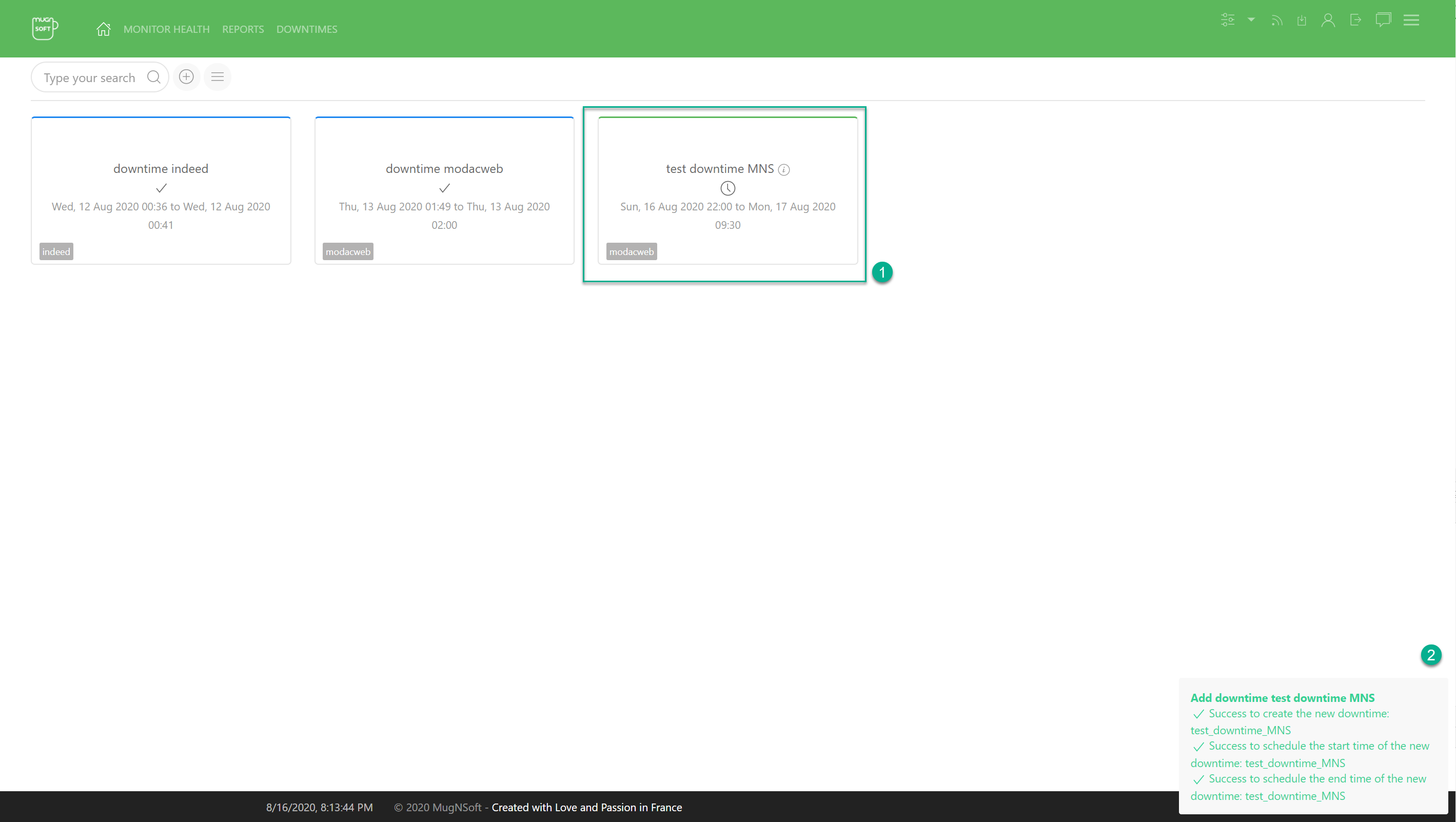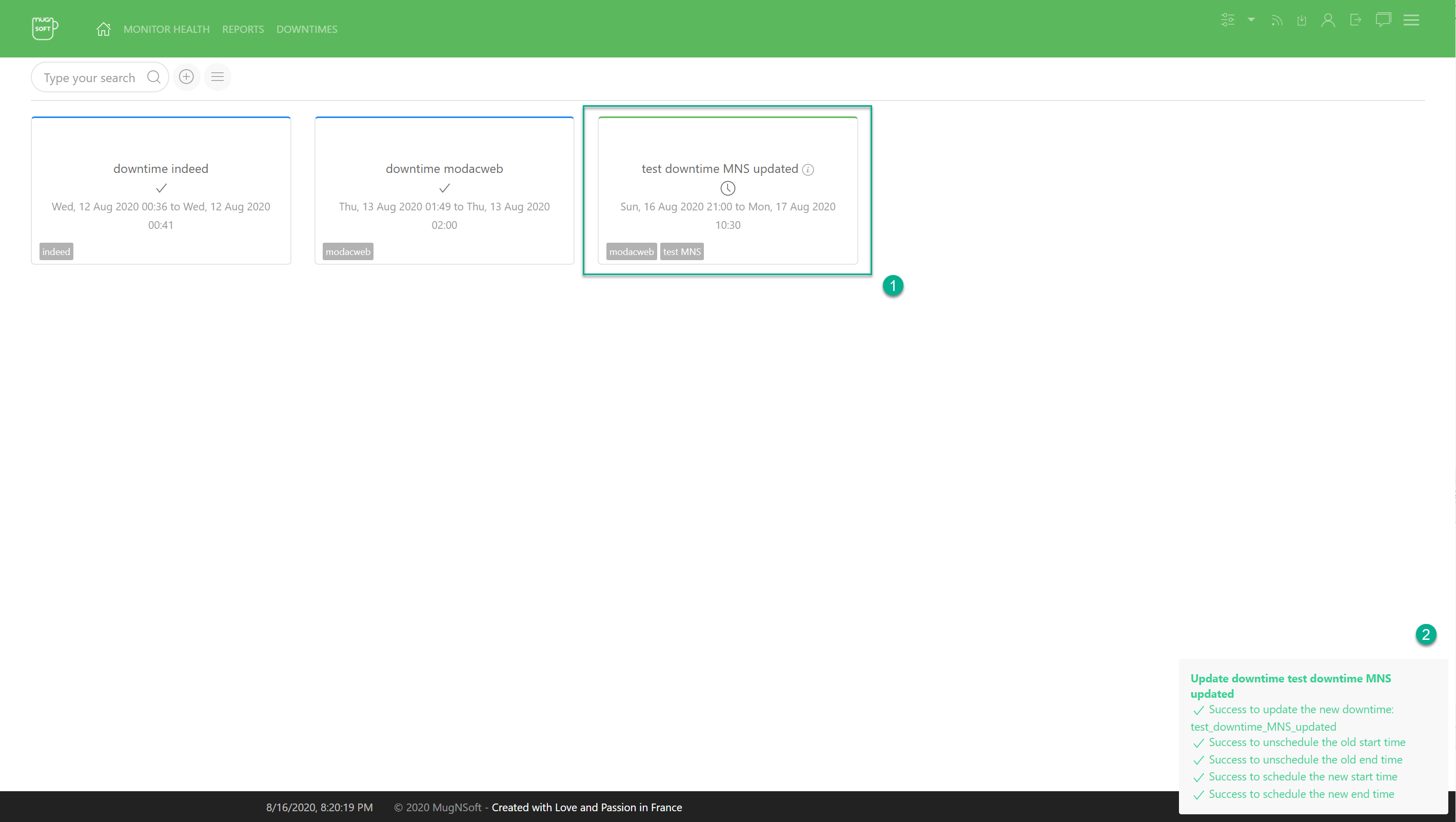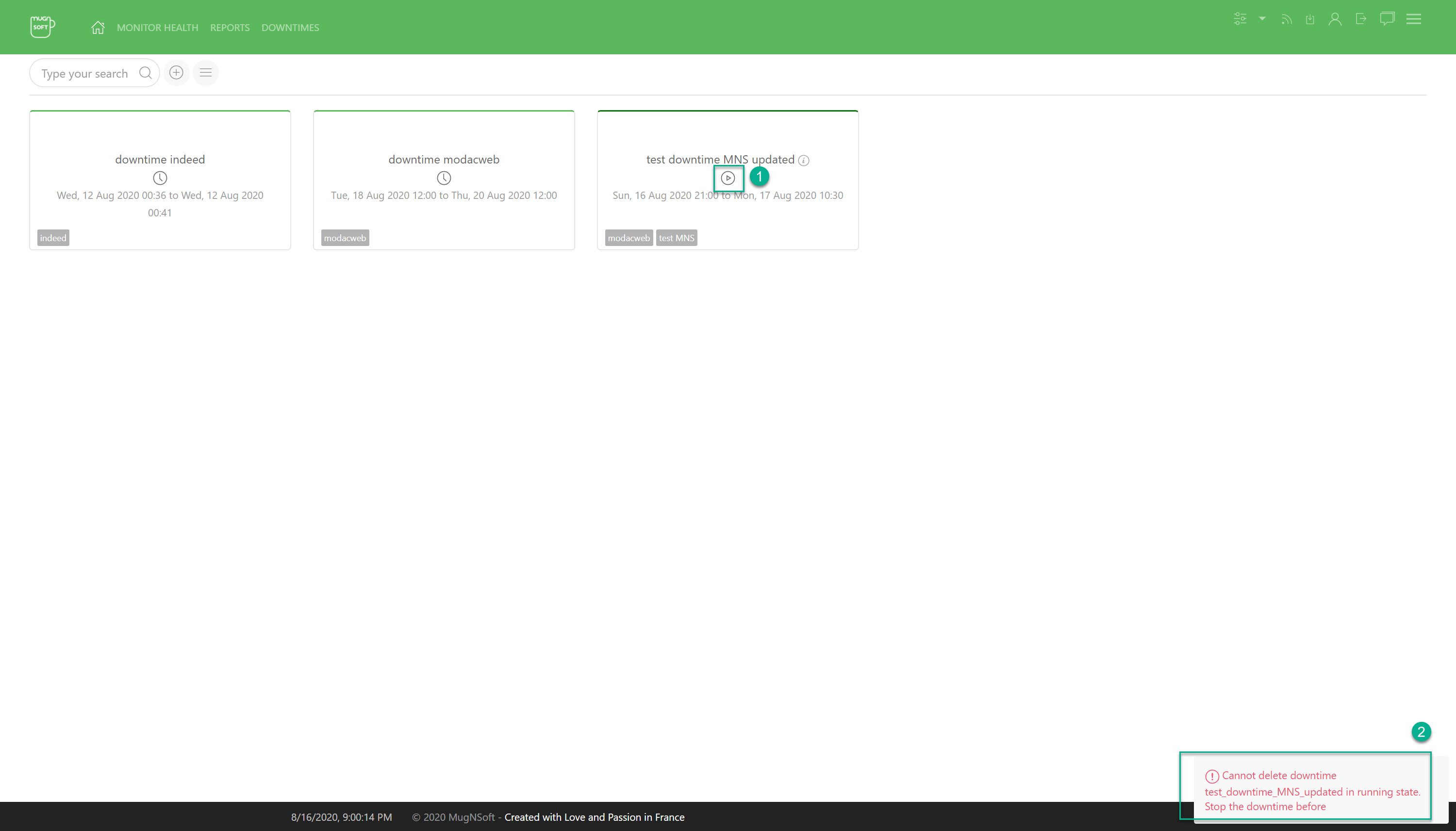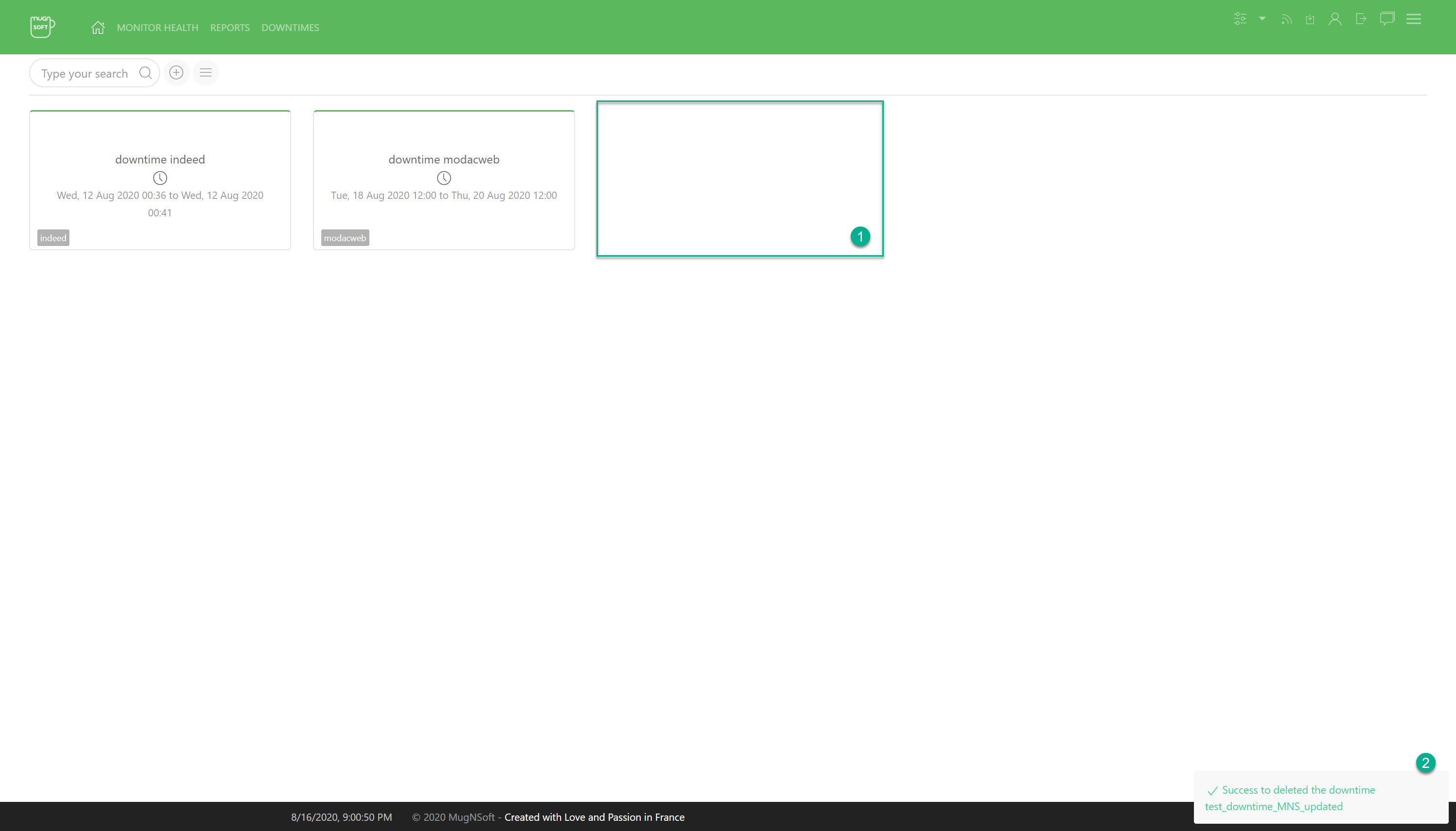Downtime operations
This section describes how to add/edit/delete downtime.
A downtime contains the following information: a schedule start time and a schedule end time.
Downtimes can be triggered to start or stop immediately.
Downtimes are organized using tags from the monitors.
Downtimes are organized by tags
The computed list of monitors
Downtimes can be associated with tag(s) and/or monitor(s). The list of monitors they reference is generated from the tag(s) and/or monitor(s).
For instance: mon1 has tag1, mon2 has tag1 , mon3 has tag2, mon4 has no tag. A given report has monitor mon4 and has tag tag1, then the computed list of monitors for this report will be mon1, mon2, mon4. The downtime will be triggered for each monitor in this list.
Accessing downtimes and user privileges
Users in the ADMIN group can add, edit, or delete a downtime, as well as add or remove monitor(s) and/or tag(s) from a downtime.
UUsers with tags matching those on the downtime and belonging to the USER group can also add, edit, or delete a downtime, as well as add or remove monitor(s) and/or tag(s) from a downtime
A downtime can have one or more tags.
Add a Downtime
- Click on the plus icon

A. Go to the Settings panel
- Set the downtimename, state (enabled/disabled), optionnally a description.
- Add monitors and/or tags fields for this downtime.
- Add recipients emails, the Data Range over which the data should be collected, enter the scheduled date time.
B. Click on save

- The new downtime appears in the list
- A notification window box will appear at the right corner

Edit a Downtime
- Click on the pencil icon

A. Go to the Settings panel
- Edit the downtimename, state (enabled/disabled), description.
- Edit monitors and/or tags fields for this downtime.
- Edit recipients emails, the Data Range over which the data should be collected, edit the scheduled date time.
B. Click on update

- The new tag should be visible in the downtime list.
- A notification window box will appear at the right corner

In the below screenshot, we can see:

- A completed downtime
- A scheduled downtime
- A running downtime
Start a Downtime immediately
- click on the forced start icon (1)

- The downtime state should have changed.

There’s a notification box saying that the downtime was triggered

- The monitors related to this downtime should be in downtime. From now they should not be scheduled to run.

Stop a Downtime immediately
- click on the forced stop icon (2)

- Enter the recipient email address

There’s a notification box saying that the downtime was triggered

Delete a Downtime
- Click on the trash icon

- Confirm the deletion

- The downtime is currently running (by design we cannot delete a running downtime)
- That deletion was prevented as this donwtime is still running. A status is displayed in the notification box

- The downtime is no longer in the list
- The deletion status is displayed in the notification box

Filter downtimes
We can filter downtimes based on their state (enabled/disabled) or their name.
- Click on the given button to toggle the filter
- Click on any of these value to filter based on the state
- Type in case sensitive pattern (part of the downtimename, tag, monitor) and type enter

- Type in “MN” and type enter
- Downtimes matching this criteria should appears in the list
